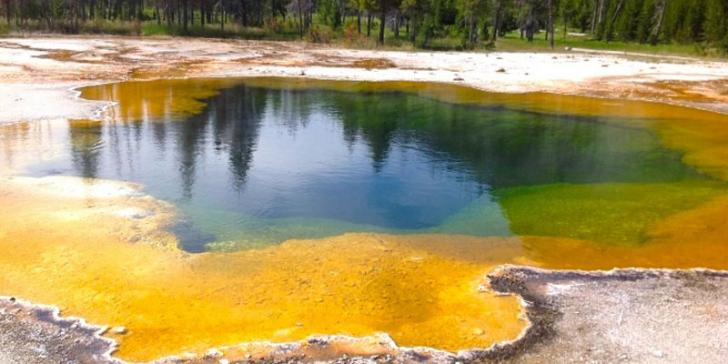Archaea is one of the most primitive forms of life which was developed approximately 3.5 to 4 billion years ago. In this article, we will learn about different types of archaea.
What is Archaea?
Archaea is a unicellular organism that is regarded as the linking bridge between bacteria and eukaryotes.
One of the peculiar features of archaea is that its cell wall is composed of ether-linked lipids called Pseudopeptidoglycan. Also, it lacks the membrane-bound nucleus and other cell organelles such as mitochondria, endoplasmic reticulum, etc.
Where can we find Archaea?
Archaea are found in a wide range of habitats, from extremely saline to acidic/alkaline or extremely hot to insanely cold places. They contribute nearly 20% of the earth’s biomass and play a major role in the global ecosystem.
Types of Archaea

1. Crenarchaeota
Archaea having the ability to tolerate extreme temperature and acidity is called Crenarchaeota. This type is further divided into two sub-types.
- Thermophiles: Archaeans that live in extremely hot temperatures are called thermophiles. They can grow and reproduce at temperature 100oC, and sometimes even above. They are found in acidic soils, hot springs and near volcano openings.
Example – Methanopyrus kandleri - Mesophiles: Archaeans that live in neither too hot nor too cold, but moderate temperature are known as mesophiles. They grow and develop the best in temperature ranging from 20- 40oC. They are typically found in cheese, yoghurt, etc.
Example – Listeria monocytogenes - Psychrophiles: Archaeans that live in extremely cold temperatures are called psychrophiles or cycrophiles. They can grow and reproduce in temperature ranging from -20oC to +10oC. They are found in arctic and alpine soil, deep ocean water, high latitude, glacier, snowfields, etc.
Example – Chryseobacterium greenlandensis
2. Euryarchaeota
Methane-producing and salt-loving archaea are known as Euryarchaeota. This type is further divided into two sub-types.
- Methanogens: Archaeans that release methane as waste during the process of digestion or making energy. They play important role in carbon cycle and are often used in sewage treatment plant.
Example – Methanocaldococcus jannaschii, Methanobrevibacter smithii - Halophiles: Archaeans that flourish in extremely saline locales are known as halophiles. They can be found anywhere with concentration of salt five times greater than that of the ocean such as Great Salt Lake, Owens Lake, Dead Sea, etc.
Example – Dunaliella salina, Halobacterium salinarum.
3. Korarchaeota
According to the researches, the Korarchaeota group of archaea does not belong to the lineage of Crenarchaeota and Euryarchaeota but is enriched with a mixed culture of both types.
They are found only in a high-temperature hydrothermal environment. However, they are not abundant in nature.
